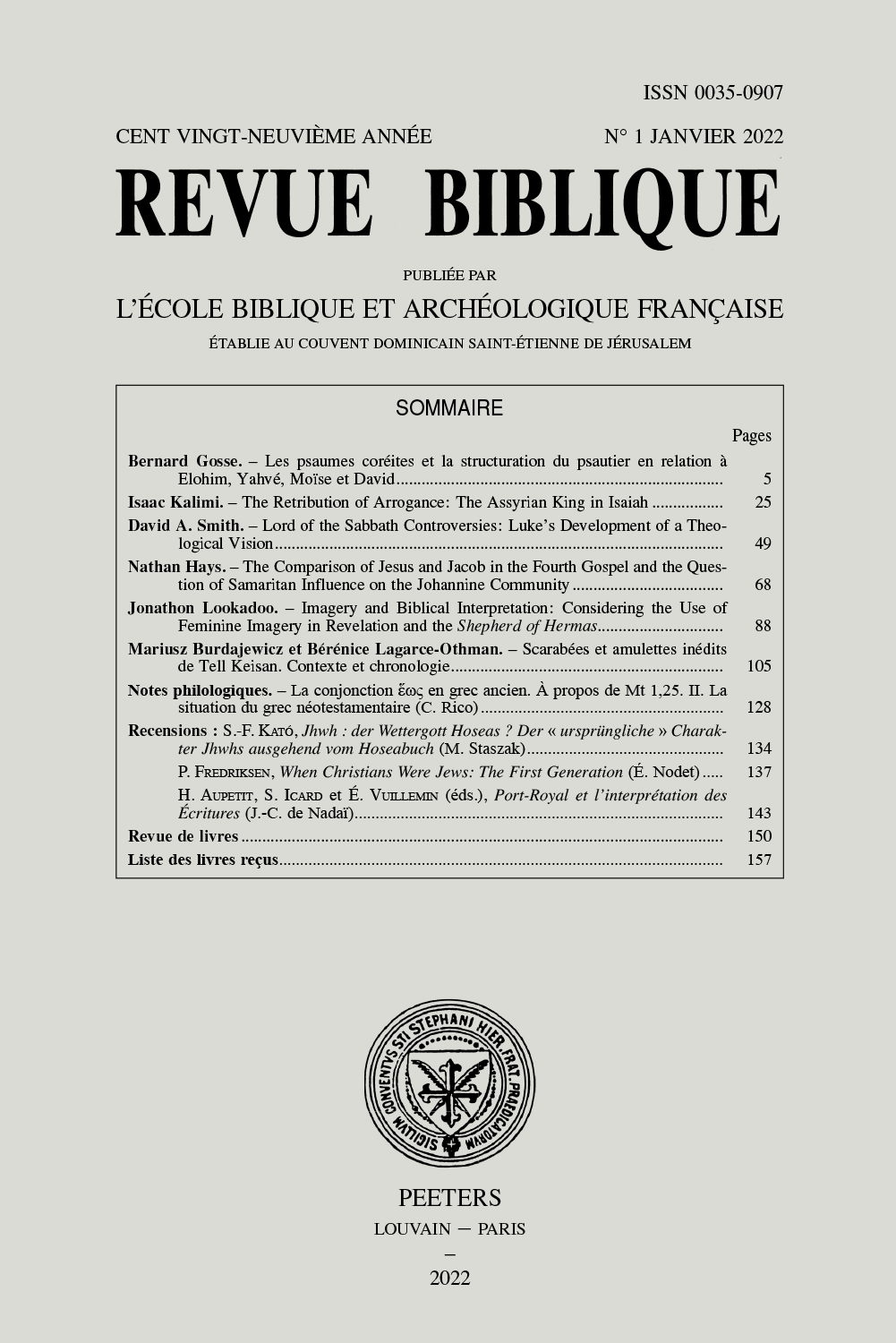 previous article in this issue previous article in this issue | next article in this issue  |

Preview first page |
Document Details : Title: Πρωῒ ἔννυχα λίαν ἀναστὰς ἐξῆλθεν (Mark 1,35; 16,2.9a) Author(s): ANDREJEVS, Olegs Journal: Revue Biblique Volume: 132 Issue: 2 Date: 2025 Pages: 235-256 DOI: 10.2143/RBI.132.2.3294262 Abstract : Since at least the 1960s, a number of scholars have proposed the existence of an intentional link between Mark 1,35 and 16,1-8, including as recently as 2006 (M.E. Boring). Others have expressed skepticism, with clearly articulated objections coming from R.H. Gundry in 1993. In his analysis, Boring has not responded to Gundry’s observations. How valid are the objections that have been raised against this hypothesis? In this study, Mark 1,35 is examined from three perspectives. First, surveying the last century of scholarship, it is assessed whether Mark 1,35 is more likely to be traditional or redactional. Second, Mark’s use of the term πρωΐ, denoting the fourth night watch in 13,35 and refined in the gospel only in 1,35 (πρωῒ ἔννυχα λίαν) and 16,2 (λίαν πρωΐ), receives close attention. Finally, Mark 1,35 is examined through the lens of classical narratology. The conclusion reached is that Mark 1,35 is likely a redactional creation of the evangelist, exclusively shares with 16,2 the context of the early portion of the fourth night watch on the first day of the week, and is likely to be intended as a proleptic foreshadowing of the resurrection of Jesus. Depuis au moins les années 1960, de nombreux biblistes ont proposé de voir un lien délibéré entre Marc 1,35 et 16,1-8, y compris aussi récemment qu’en 2006 (M.E. Boring). D’autres ont réagi avec scepticisme, notamment R.H. Gundry avec des objections clairement articulées en 1993. De son côté, Boring n’a jamais répondu aux observations de Gundry. Les objections qui ont été soulevées contre ce lien délibéré sont-elles valables? Dans cet article, Marc 1,35 est abordé sous trois angles. Premièrement, la recherche du siècle dernier est examinée pour voir s’il est plus plausible que le texte soit traditionnel ou rédactionnel. Deuxièmement, cette étude traite de l’utilisation par Marc du terme πρωΐ, qui désigne la quatrième veille de nuit en 13,35 et qui n’est pas précisé en-dehors de 1,35 (πρωῒ ἔννυχα λίαν) et 16,2 (λίαν πρωΐ). Enfin, Marc 1,35 est examiné sous l’optique de la narratologie classique. La conclusion à laquelle on parvient est que Marc 1,35 est probablement une création rédactionnelle de l’évangéliste; qu’il partage seulement avec 16,2 le contexte de la première partie de la quatrième veille de nuit, le premier jour de la semaine, et qu’il a probablement été conçu comme une préfiguration proleptique de la résurrection de Jésus. |
|


